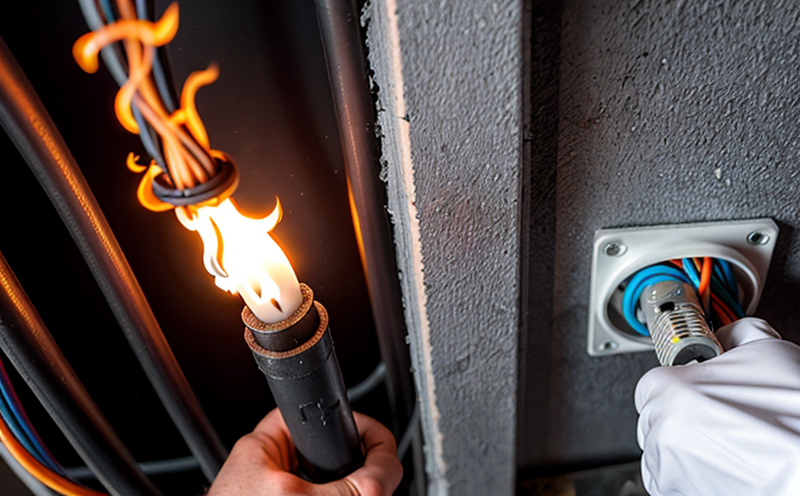Documentation and Reporting of Cable Fire Test Results
In fire safety testing, documentation and reporting are critical components that ensure compliance with regulatory standards and facilitate informed decision-making. For cables and wiring, accurate and detailed documentation is essential to demonstrate the fire resistance performance of these materials. This service focuses on providing comprehensive reports based on rigorous fire tests conducted in accordance with international standards.
Fire testing for cables involves subjecting them to controlled environments that simulate real-world conditions under which they might be exposed to flames or high temperatures. The goal is to assess how well the cable will resist ignition, prevent spread of flame, and maintain electrical continuity even after exposure to fire. This process requires meticulous documentation covering all aspects from test setup to final results.
Our service includes several key elements:
- Test Setup: Our team carefully prepares the cables according to specified protocols using appropriate fixtures designed to mimic actual installation conditions.
- Data Collection: Using advanced instrumentation, we collect detailed data throughout the test including temperature changes, flame propagation rates, and other relevant parameters.
- Analytical Review: Post-test analysis is conducted by our experienced engineers who interpret the raw data to determine compliance with relevant standards.
The resulting report provides a thorough overview of the cable's performance during the fire test. It includes graphical representations like temperature profiles and video recordings captured during testing, which help visualize the behavior of the cable under fire conditions.
Compliance with various international standards is crucial in this field as it ensures consistency across different markets and regulatory environments. Some key standards include ISO 17461-1 & -2 for horizontal cables, IEC 60332 for vertical runs, and ASTM E1695 for riser cables.
Our service also offers additional value through personalized recommendations based on the test outcomes. These insights can guide future design modifications or material selection to enhance fire safety further. Furthermore, we provide training sessions tailored towards your organization's needs so that you have a clear understanding of both the testing procedures and interpretation of results.
Applied Standards
| Standard Number | Description |
|---|---|
| ISO 17461-1 & -2 | Fire resistance of horizontal cables in case of fire. Part 1: General requirements; Part 2: Test methods. |
| IEC 60332 | Fire tests on cable assemblies up to and including 400V rated voltage used in fixed installations. |
| ASTM E1695 | Standard test method for fire resistance of riser cables. |
| EN 50265-1 & -2 | Fire behaviour of electrical and electronic equipment in case of fire. Part 1: General requirements; Part 2: Test methods. |
Benefits
- Enhanced Safety: Accurate documentation ensures that all necessary information is captured, leading to safer products and installations.
- Compliance Assurance: By adhering strictly to relevant standards, you can avoid costly penalties associated with non-compliance.
- Improved Quality Control: Regular testing helps identify potential issues early on in the development process.
- Competitive Advantage: Demonstrating robust fire resistance can appeal to demanding clients and improve brand reputation.
Use Cases and Application Examples
| Critical Use Case | Description |
|---|---|
| Data Centers | In data centers, uninterrupted power supply is crucial. Testing cables used in these facilities ensures they can withstand fires without failing. |
| Healthcare Facilities | Hospitals and clinics rely on reliable electricity supplies to maintain patient care services during emergencies. Fire-resistant cables protect against potential disruptions caused by fires. |
- Industrial Installations: In industrial settings where machinery and equipment are powered by electrical systems, fire-safe cables prevent catastrophic failures due to fires.
- Residential Buildings: Residential properties benefit from fire-resistant cables that contribute towards reducing risks during accidental fires or structural collapses.





